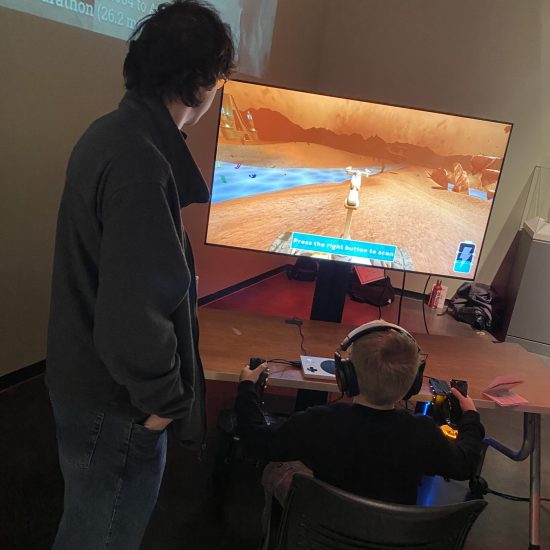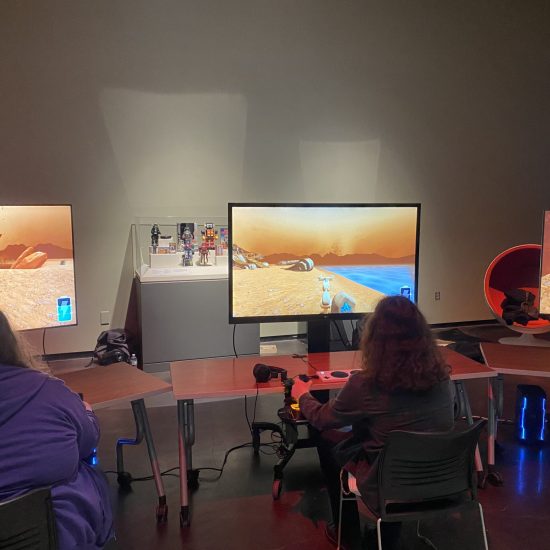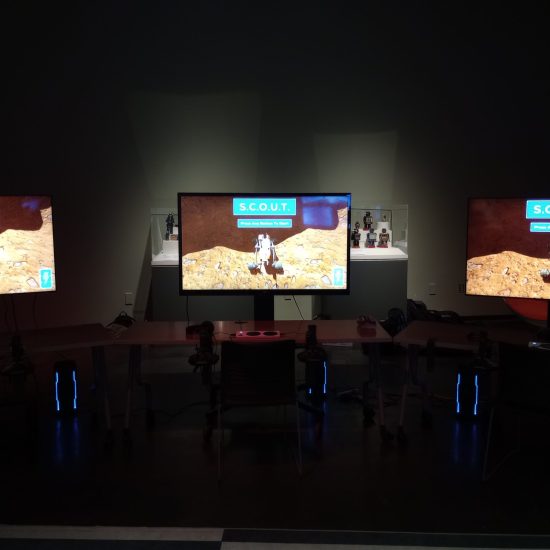Nicholas Junkas
Scout
ㅤㅤㅤㅤ
Platform:
Windows PC, Mac
Engine:
Unity
Language:
C#
Duration:
January 2023 – May 2023
Team Size: 22
Role:
Programmer, Game Designer
Overview:
Responsibilites:
General Game Design:
- Developed a waypoint system
- Implemented a rover hovering feature
- Designed and Implemented rover scanning features
Level Design:
- Aided in placement and sizing of various interactable objects
- Configured and tuned control scheme for rover
- Integrated unique hardware for rover experience (ThrustMaster flight joystick and Xbox adaptive controller)
Special Effects:
- Added post processing effects to specific areas and player events
- Implemented shaders for map objects
- Created particle systems for map objects and player
Improving Player Navigation:
One of my most important responsibilities for Scout was designing and implementing features related to the players ability to navigate the planet environment. My aim was not only to address navigational challenges identified during playtests but also to guide players toward an immersive experience of exploration and discovery. Three key decisions I made in refining player navigation were introducing a hover ability for the rover, incorporating waypoints within the game, and strategc
Before adding the hover ability to the rover, the only way to travel was by driving on the ground. This soon proved to be contrary to what the team wanted, as players would spend a significant amount of time maneuvering around large obstacles, rather than discovering new portions of the map. By allowing the rover to hover, I essentially added vertical scaling of the world and an easier way for the player to maneuver around obstacles.
Another issue found in the early playtests of Scout was a lack of direction given to the player. Originally, the team aimed for minimal influence over the player’s actions, simulating a scenario where the player was dropped into the world with no explicit guidance. However, given that the player only had three minutes to experience the game, this approach led to widespread frustration and confusion among many players. Feedback from playtesters consistently indicated a preference for some form of direction, whether it be guiding them towards interactable objects or highlighting interesting spots to explore within the world.
In order to improve upon this lack of direction, I decided to implement waypoints above both interactable objects in the scene, and any landmark locations on the map. Doing so invoked a sense of curiosity and even urgency when exploring. Players constantly had an understanding of where they could go to learn more about the environment. One major challenge I had with the waypoints at first was cutting down the amount of them on the screen at once. I wanted to give the player multiple options to travel to, but didn’t want repetitive or cluttered UI. To fix this, I made waypoints become visible only if the player is looking in the direction of them, additionally, I only allowed one waypoint per type of interactable.
Rover Scanning:
Aside from player navigation, I was also tasked to implement a way to enable waypoints and interact with objects around the planet. In the end, I decided upon giving the rover a scan mechanic, where the rover would play an animation to either find nearby interactable objects or individually scan objects for a detailed overview. By myself, I created the shader, animations, code, and UI menus associated with the scanning of the rover. Scanned objects were also logged throughout the playthrough, allowing the player to see how many different types of objects they encountered during their short playthrough.
Rover Control Scheme:
Scout’s FUSE control scheme centered on the use of two devices to simulate the operation of a rover through a control panel. In the early stages of the project, I participated in a discussion that determined how Scout’s modest budget would be allocated. My suggestion was to prioritize purchase of immersion-enhancing elements over booth decorations. Consequently, I took on the responsibility of integrating a joystick called the Thrustmaster, and an Xbox Adaptive Gamepad controller into Unity. This not only elevated the game’s immersion but also made the game more accessible across all age groups. Despite my focus on integrating these devices, I also worked on incorporating mouse and keyboard functionality into the game.


